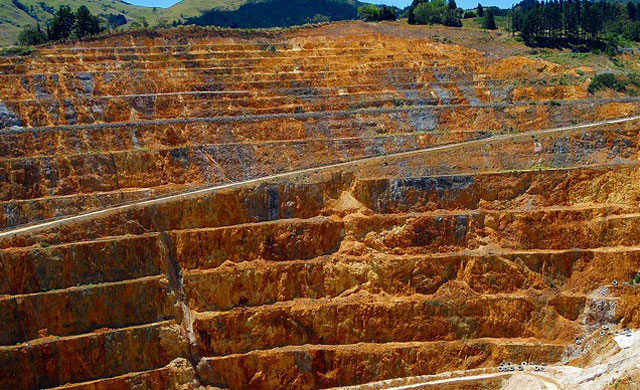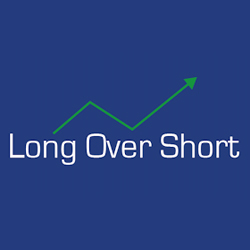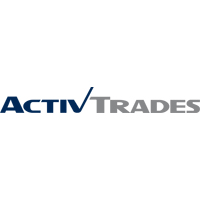Sable Mining Africa (LSE:SBLM), the AIM listed exploration company, had announced its results for the six month period ended 30 September 2013.

OVERVIEW:
– Focussed on the rapid development of the high grade, high margin, low capital expenditure 123.5km2 Nimba Iron Ore Project in Guinea
– Nimba already the second largest undeveloped on- or near-rail DSO project to be held outside the major mining companies in West Africa, and drilling on-going to test resource extension area
– Upgraded JORC resource – current JORC resource of 178.4Mt @ 59% iron, representing a 47% increase in tonnage from the maiden Resource announced in February 2013
– High Grade DSO and Low Deleterious Elements – only a simple crush and screen process will be required in the early years of production positively impacting capital expenditure requirements
– Potential for a steady production rate of 10Mt per annum over a life of 20 years
– Export decree and Mining Licence granted by the Government of the Republic of Guinea
– MOU with Government of Liberia regarding infrastructure – existing nearby under-utilised, standard gauge railway approximately 26km away, linking the region to the major Liberian port of Buchanan
– Strengthened capital position following raising of £17.1 million – well funded for continued development
– Defined exploration programme –Pre-Feasibility Study will be completed in the near term ahead of the BFS targeted for 2014
– Aim to release an updated JORC Resource in H1 2014
CHAIRMAN’S STATEMENT
As demonstrated by our recent updates to shareholders, our focus remains firmly set on the Nimba Iron Ore Project in south-east Guinea (‘Nimba’ or ‘the Project’). With a current JORC Resource of 178.4Mt @ 59% iron (‘Fe’), the Project has already been demonstrated to be one of the largest undeveloped high grade Direct Shipping Ore (‘DSO’) projects located near to existing infrastructure, underpinning our confidence that we are advancing an asset with considerable commercial value. With this in mind, our attention remains centred on transforming Nimba into a low-cost, high grade iron ore producer, with low capital intensity, by 2015. This objective has been supported:
· by investors, as demonstrated by our recent £17.1 million fundraising; and
· by local stakeholders and the governments of both Guinea and Liberia, as demonstrated by the granting of a mining licence and export decree relating to the Project and the signing of a memorandum of understanding relating to infrastructure development associated with the Project.
Sable Mining now sits in the enviable position of developing a world-class DSO project, with a healthy cash treasury capable of advancing the asset through to the completion of its Bankable Feasibility Study (‘BFS’) in 2014, with the all-important support of the interested local participants.
The Nimba Iron Ore Project:
The period under review and the months since have been marked by the achievement of various significant milestones which have de-risked the development of Nimba and underpinned its status as a significant and strategic DSO project. The Project’s key differentiators include high grade ore and positive metallurgy, significant tonnages and minimal strip ratios, together with nearby established rail infrastructure and supportive governmental authorities.
High Grade DSO and Low Deleterious Elements:
Nimba benefits from high grade canga mineralisation with low deleterious elements and this is expected to impact positively on the Project’s capital expenditure requirements, as only a simple crush and screen process will be required in the early years of production. In addition, the low operating costs and an anticipated higher margin for the premium iron ore product produced at the mine, further strengthen the Project’s appeal.
The Company completed follow-up metallurgical test work in July 2013 which demonstrated an increase in lump fraction from 15% to 40%, and confirmed fines DSO yield of 84% from simple crush and screen processing. In addition, work on the tailings material in the fines fraction showed that this material has a 72%-78% yield to a beneficiated 63%-65% Fe concentrate. Whilst the Company remains focussed on its considerable DSO mineralisation, this latter information has the potential to significantly enhance the economics of the entire Nimba operation, through the potential conversion of the Nimba flank material into Reserve status in the future.
Significant Tonnage at Surface:
Drilling on the expansion area of Plateaux 2 and 3 (an area not originally incorporated into the maiden Resource) resulted in two significant JORC upgrades in H2 2013. The current expanded JORC Resource, announced in November 2013, resulted in a 47% increase in tonnage, to 178.4Mt, from the maiden Resource announced in February 2013. Whilst this upgrade already establishes Nimba as one of the largest undeveloped near-rail DSO assets owned outside the majors globally, with potential for a steady production rate of 10Mt per annum over a life of 20 years, there remains significant Resource upside for the Company. Drilling is already underway on an area of Plateau 3 which was previously inaccessible due to the rainy season, and this 30 hole drill programme has the potential to increase the Resource towards our total exploration target for Plateaux 2 and 3 of in excess of 200Mt.
Further to Plateaux 2 and 3, the Company also has significant potential Resource upside from the, as yet undrilled, Plateau 1. Plateau 1 covers an area larger than either Plateaux 2 or 3, and on which the Company has previously released an exploration target of 261Mt based on ground penetrating radar.
In addition to the aforementioned tonnage, it is also important to note that this mineralisation occurs at surface, which will reduce the stripping ratio to negligible levels and significantly enhances the economics of the project. This surface mineralisation stems from the unique way in which the Nimba orebody evolved. Located at the base of a very steep mountain, Mount Nimba, the Project’s plateaux were historically the subject of a high-energy environment, within which non-iron boulders were essentially smashed and eroded away at the base, forming high-grade canga in deep paleo-channels. Thus, these channels contain the thickest and highest grade ore, which the Company is initially targeting. However the thinner flank mineralisation also has the potential to yield significant additional tonnages which could further enhance the entire economics of the Project.
Established infrastructure:
A key differential for Nimba is its proximity to established rail infrastructure – a highly important factor for any bulk commodity development asset as this has the potential to dramatically reduce capital intensity and thereby enhance financial returns.
Nimba is located approximately 26km away from a standard gauge railway, with spare capacity, linking the region to the major Liberian port of Buchanan. In October 2013, the Company announced the granting of an export decree by the Government of the Republic of Guinea, authorising Sable Mining, through its 80% owned subsidiary West African Exploration SA (‘WAE’), to export iron ore through Liberia. The granting of the export decree was a major endorsement for Sable Mining and represented a critical milestone to achieving access to existing infrastructure.
This progress was further accelerated in November 2013 by the signing of a memorandum of understanding between WAE and the Government of the Republic of Liberia, the purpose of which is to enable the parties to conduct technical due diligence, third party discussions and negotiations with a view to entering into a binding infrastructure development agreement relating to the development, use and operation of rail and port infrastructure by WAE in Liberia, for the purposes of exportation of iron ore products from Nimba.
These two highly significant announcements demonstrated the potential for Nimba to be developed towards full commercial production without the highly capital intensive infrastructure spends that affects many other large iron ore deposits in West Africa. This again makes the Project extremely favourable on potential capital costs compared to its junior iron ore peers.
Supportive Local Stakeholders:
Since commencing exploration activities at Nimba in February 2012, Sable Mining has kept an open channel of communication with both the government of Guinea, and the government of Liberia, in addition to other local stakeholders, in order to forge the optimum route for development of this strategic asset.
Sable Mining was granted in September 2013, by the Government of the Republic of Guinea, a mining licence for Nimba which was followed in October 2013 by the aforementioned export authorisation. These two critical endorsements by the Guinean government reflect both Sable Mining’s commitment to realising the value of Nimba for all stakeholders, as well as the government of Guinea’s eagerness to accept external investment into the country in order to promote and thereby generate revenue from the development of its huge natural resource base. We look forward to developing long term relationships with all appropriate authorities as we move forward and develop Nimba into a significant commercial iron ore production asset.
Treasury:
In November 2013 the Company was delighted to announce the raising of £17.1 million from new and existing shareholders to bolster its cash treasury. With this injection of capital, the Company is well funded for the completion of its BFS on Nimba, targeted for 2014.
Following the completion of the BFS, we will then be in a position to evaluate off-take finance, debt finance, and residual equity finance, through which to construct a mining operation at Nimba.
Financial Overview:
Sable Mining is reporting for the six months ended 30 September 2013 a pre-tax loss on continuing activities of US$24.7m (2012: US$9.9m). The pre-tax loss is after an impairment charge of US$21.1m (2012: US$ nil) on the Company’s coal assets in Zimbabwe and South Africa reflecting continued uncertainty in the region’s domestic and international markets for this commodity. The post-tax loss attributable to shareholders for the period was US$16.8m (2012: US$7.9m). As at 30 September 2013 cash balances were US$5.0m (2012: US$23.4m). Since the period end the Company raised US$27.1m before transaction costs.
Outlook:
The past 18 months have seen Sable Mining achieving remarkable successes at Nimba. Looking forwards, there are several key catalysts over the coming months which we believe will further de-risk development, and enhance the attributable value, of this world-class asset.
Our near term objectives include the publication of a Pre-Feasibility Study (‘PFS’), which will set out the optimal route to production at Nimba, ahead of the BFS later in the year. Separately we remain focussed on assessing the wider exploration potential of Nimba through which to enhance the overall economics of the Project, and in line with this we aim to release an updated JORC Resource in H1 2014.
Our discussions with the appropriate financial institutions and potential off-take partners will continue during this period, as we remain focussed iron ore production in 2015.
We would again like to thank our valued shareholders, partners and local stakeholders for their continued support during this highly active period, as we look towards the next chapter in Nimba’s evolution into a low cost, high grade iron ore production asset in the near term.
Phil Edmonds
Chairman

 Hot Features
Hot Features













